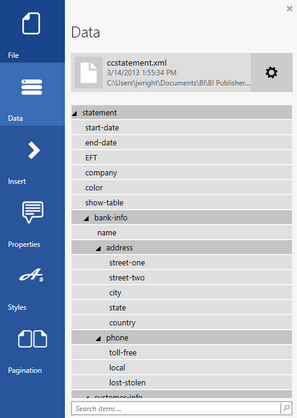|
Get to Know Your Data |




|
The best place to get started when designing your Document Templates is to begin with understanding your data that will be populating your resulting document. You will need to know where certain values are located within your data, which elements are repeating, and where specific flag elements might be located to display Conditional Paragraphs and Text.
A great place to accomplish this is by viewing the Data Dialog. You can read more about assigning your data source and viewing the Data Representation Tree in this dialog in the Assigning a Data Source section of the help documentation. You should first assign your data source here, and then navigate through your data to inspect what elements and attributes are available to you.

Figure 1: The Data Dialog is used to review the structure and content of a data source.
Remember that your Document Templates may often consist of elements such as Conditional and Repeating Paragraphs to dynamically build the content that will be displayed. You should familiarize yourself with your data to understand where you will need to find such elements and attributes to drive the construction of your Document Template.
Once you understand what type of data is available to you to build your template with, you should move forward with thinking about pagination.